 Dietary fiber has been recommended for several positive health effects. However, the reasons for these effects are complex and just being discovered. As with all of life, it involves signaling among cells throughout the body including gut cells where it is ingested, microbes in the gut that metabolize it, and immune cells triggered by metabolites. These metabolites stimulate important tissue cells in gut, lungs, liver, vagina and brain. Effects include feelings of hunger, decreasing asthmatic hyper reactivity of airways, increasing lactate in the vagina and complex functions in the brain including stimulating new neurons.
Dietary fiber has been recommended for several positive health effects. However, the reasons for these effects are complex and just being discovered. As with all of life, it involves signaling among cells throughout the body including gut cells where it is ingested, microbes in the gut that metabolize it, and immune cells triggered by metabolites. These metabolites stimulate important tissue cells in gut, lungs, liver, vagina and brain. Effects include feelings of hunger, decreasing asthmatic hyper reactivity of airways, increasing lactate in the vagina and complex functions in the brain including stimulating new neurons.
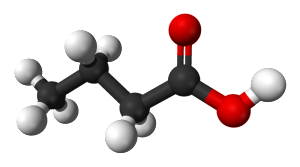
Communication between gut microbes, diet and lining cells of the gut is increasingly seen as very interconnected. Recent research shows microbe products are signals that greatly influence physiology. One major class of molecules that are prominent metabolites of fiber are short chain fatty acids or SCFAs. SCFAs have widespread effects on human receptors. They trigger epigenetic mechanisms such as histone deacetylase enzymes. SCFAs can be used as to produce energy. They have increasing implications for health. Short chain fatty acids come from microbe metabolism (fermentation) of fibers and have wide ranging effects not just releted food, but to important aspects of immunity.
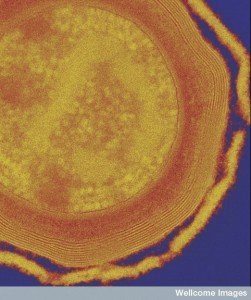 There have been many other effects on diet related to microbes. Societies with increased complex carbohydrates have more varied microbe species. Predominant fat or small sugars (sucrose) lead to fewer species. People who ate barley had better sugar tolerance and more microbes Prevotella copri; they fermented more polysaccharides. But, the effects of SCFAs from fibers are now found to be very significant.
There have been many other effects on diet related to microbes. Societies with increased complex carbohydrates have more varied microbe species. Predominant fat or small sugars (sucrose) lead to fewer species. People who ate barley had better sugar tolerance and more microbes Prevotella copri; they fermented more polysaccharides. But, the effects of SCFAs from fibers are now found to be very significant.
Previous posts described the unique environments of the human gut with vast communication between immune cells, epithelial cells and microbes. Another post described the many lipid signals that are being discovered in the brain. The gut provides a huge environment with many compartments for a wide range of different microbes with different functions. These microbes produce vitamins, digest food material, establish friendly relations with epithelial and immune cells and defend against dangerous microbes. Microbes produce substances that can cause disease and can help avoid disease. This post emphasizes the microbe metabolic products SCFAs.
Short Chain Fatty Acids

Production of SCFAs by microbes metabolizing dietary fiber is very prominent in the colon. The major products are butyrate, propionate, and acetate. When there aren’t enough fibers, microbes eat amino acids from proteins and fats. But, they don’t like them as much because they don’t produce as much energy.
Fermentation of protein produces other types of fatty acids that are branched, not short chained. These can also be toxic. Branched fatty acids—isobutyrate and 2 methylbutyrate—are from branched amino acids—valine, isoleucine and leucine. Effects from these branched fatty acids are related to insulin resistance. If fiber is added to this situation then more healthy microbes and SCFAs are produced.
Enzymes in the gut convert fiber to simple sugars (monosaccharides). This process is complex with many different microbe enzymes that also produce SCFAs as by products of the process. Acetate is made from pyruvate by two different microbe pathways. One changes CO2 to formate and the other makes CO2 and CO. The CO adds a methyl group to make acetyl-CoA.

Propionate has three pathways. It comes from succinate to methylmalonyl-CoA. It is also made from acrylate and lactate. It also comes from deoxyhexose sugars
Butyrate is from acetyl-coA and butyryl-CoA through several enzymes. Other microbes make it from lactate and acetate. This pathway gets rid of lactate that could otherwise create problems in the gut. Another pathway uses proteins with lysine amino acids.
Having these many different routes shows that microbes can adjust the environment of the gut to keep it stable.
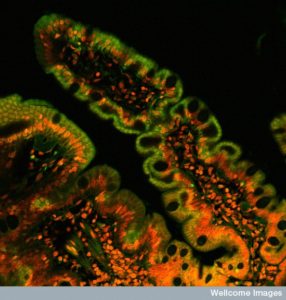 Most of the SCFAs are in the cecum and the first part of the colon. They are absorbed as they go down the colon so there is less at the end. Colon cells prefer butyrate for energy the most of all SCFAs. The others often drain into the liver and the portal vein into the blood. Propionate is altered in the liver and doesn’t make it to the blood.
Most of the SCFAs are in the cecum and the first part of the colon. They are absorbed as they go down the colon so there is less at the end. Colon cells prefer butyrate for energy the most of all SCFAs. The others often drain into the liver and the portal vein into the blood. Propionate is altered in the liver and doesn’t make it to the blood.
Acetate reaches the blood most often and it can cross the blood brain barrier. One effect in the brain is to reduce appetite. The other two primary SCFAs propionate and butyrate, even in small concentrations affect the brain and hormones as well.
SCFAs Signals in Epigenetic Processes
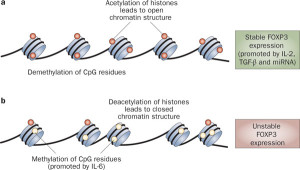 Histones are protein spools that protect DNA that is wound around them. To use DNA, the DNA must be unwound from the histones. Acetyl tags placed by special enzymes open the spools and allow use of the particular DNA in that section. These enzymes are called acetylases or acetyltransferases. Other enzymes remove the acetyl tags (de acetylases) and inhibit the use of DNA sections. The tag is placed on a lysine amino acid in tails of histones 3 and 4. Tails are extra strands of protein hanging from the large histone molecule.
Histones are protein spools that protect DNA that is wound around them. To use DNA, the DNA must be unwound from the histones. Acetyl tags placed by special enzymes open the spools and allow use of the particular DNA in that section. These enzymes are called acetylases or acetyltransferases. Other enzymes remove the acetyl tags (de acetylases) and inhibit the use of DNA sections. The tag is placed on a lysine amino acid in tails of histones 3 and 4. Tails are extra strands of protein hanging from the large histone molecule.
Inhibitors of enzymes that take off acetyl tags (inhibitors of histone de acetylase or HDAC inhibitors or HDACI). HDAC inhibitors are used for cancer treatment. They can stop particular immune and inflammatory genes.
 Butyrate and propionate are HDAC inhibitors. This implies that SCFAs can be modulators of genetic networks that could relate to immune functions and cancer.
Butyrate and propionate are HDAC inhibitors. This implies that SCFAs can be modulators of genetic networks that could relate to immune functions and cancer.
Butyrate is the favorite food of epithelial lining cells of the colon. It helps reduce cancer in the colon and decreases inflammation. Butyrate both inhibits HDACs and alters many genes in the colon cells. Strangely, butyrate inhibits cancer cells growth that starts in the colon but not the colon epithelial cells. In normal colon cells, it is fuel for growth.
Cancer cells prefer sugar and don’t eat the butyrate which accumulates in them. With this greater concentration the HDAC inhibition is greater.
Butyrate has two complex actions on the histones of particular genes. In normal cells, it stimulates the tags by enzymes know as HAT (histone acetylase transferases). But, in cancer cells it is an inhibitor of HDAC. By eating so much butyrate, normal colon cells avoid its toxic qualities. They avoid inhibition of stem cell functions that would otherwise occur.
A different situation occurs in the small intestine. Butyrate inhibition of HDACs in the small intestine increases stem cells. What is unusual is that in this different microenvironment, an entirely different result occurs.
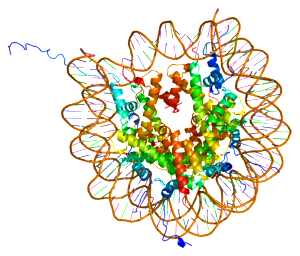 Inhibition of HDAC not only stops cancers, but also stops inflammation in macrophages just under the basal membrane of the gut lining. It also affects dendritic cells by slowing their reactions to friendly microbes. Thus HDAC inhibition helps maintain friendly microbes as well.
Inhibition of HDAC not only stops cancers, but also stops inflammation in macrophages just under the basal membrane of the gut lining. It also affects dendritic cells by slowing their reactions to friendly microbes. Thus HDAC inhibition helps maintain friendly microbes as well.
HDAC inhibition also affects T cell cytokines and the production of regulator T cells.
This occurs because of a metabolic shift based on increased metabolism of sugars. But, the inhibition stops this process and this stimulates other types of T cells. The metabolic change from the T cells that are activated makes them more susceptible to the HDAC inhibition from fatty acids. This occurs because of an acetyl tag on the gene that makes the special FOXP3 T cells. These are the special T cells that are vital to suppress immune activity against food particles that produce dangerous food allergies. Even acetate inhibits HDAC in T cells.
Fatty acid Genes
 Special genes related to fatty acids happen to be near a gene for the immune receptor CD22. These genes are receptors for fatty acids (called FFARs). Special receptors on epithelial cells in the colon are activated most by acetate and propionate, which are present enough to saturate these receptors. But, heavy mucous and flow will affect the concentration of these fatty acid signals.
Special genes related to fatty acids happen to be near a gene for the immune receptor CD22. These genes are receptors for fatty acids (called FFARs). Special receptors on epithelial cells in the colon are activated most by acetate and propionate, which are present enough to saturate these receptors. But, heavy mucous and flow will affect the concentration of these fatty acid signals.
Signals trigger the colon epithelium and also fat cells outside of the gut. It was also affected by the presence of particular microbes.
Acetate stimulation of these receptors improves metabolism of lipid and sugar in fat, not in muscles and liver. Effects of fatty acid signaling is very significant, but extremely complex and it is just being investigated.
Summary of Acetate Effects
- Acetate affects white fat: It lowers metabolism of fat, lowers effect of insulin on fat accumulation
 Acetate affects brain: Increases microglia, increases feeling of fullness, increases new brain cells and decreases ability to cross blood brain barrier
Acetate affects brain: Increases microglia, increases feeling of fullness, increases new brain cells and decreases ability to cross blood brain barrier- Acetate affects liver: Increases insulin sensitivity, increases fat storage, increases AMPK activity, decreases making new sugar
- Acetate affects lung: Increases regulatory T cells, decreases asthma (by HDAC9 inhibition)
- Acetate affects bone marrow: Increases insulin
Butyrate and propionate decrease inflammation and cancer, increase secretions and motility of gut
SCFAs and Health
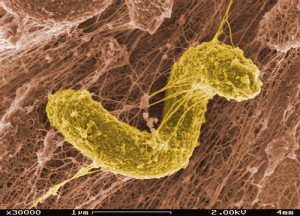 Fiber contributes to weight loss and helps with stabilization of sugar metabolism. But, the mechanisms are complex. If mice are fed butyrate and high fat, they produce more energy and don’t become overweight. Acetate given to obese mice caused weight loss and better sugar metabolism. Propionate also helped with sugar metabolism.
Fiber contributes to weight loss and helps with stabilization of sugar metabolism. But, the mechanisms are complex. If mice are fed butyrate and high fat, they produce more energy and don’t become overweight. Acetate given to obese mice caused weight loss and better sugar metabolism. Propionate also helped with sugar metabolism.
In humans, if a precursor of propionate is given, microbes make more propionate in the colon. This helped control weight gain. With propionate given to women for several months, insulin and glucose metabolism improved. One possible mechanism is a shift in metabolism where sugar is made from the fatty acids. The mechanism is not clear because butyrate worked in the liver and in the intestine. One mechanism is that butyrate and propionate change metabolism of gut epithelium to make sugar. This sugar is sensed in the liver and triggers neurons to increase insulin sensitivity.
Although fatty acids from fibers help lose weight, there are more SCFAs s in obese people. It is possible that SCFAs are used as energy and more sugar can increase weight as well. However, this could be related to unknown effects of microbes.
Immunity in the Gut
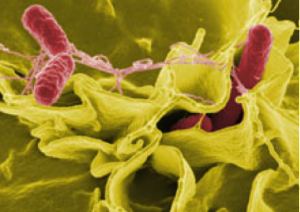 Previous posts have described how the training of immune cells is unique in the gut. This is because there are a greater number of microbes than anywhere else in the body. Also, in the gut friendly microbes are essential to help with synthesis of vitamins and for digestion. Communication is vital between the intestinal epithelial cells, microbes and immune cells. In fact, back and forth signaling of these three cells trains particular immune cells to perform in particular ways. A post described the unique training of T cells that are necessary to modulate our response to all of the food particles. These T cells have to modulate responses so that food allergies don’t occur.
Previous posts have described how the training of immune cells is unique in the gut. This is because there are a greater number of microbes than anywhere else in the body. Also, in the gut friendly microbes are essential to help with synthesis of vitamins and for digestion. Communication is vital between the intestinal epithelial cells, microbes and immune cells. In fact, back and forth signaling of these three cells trains particular immune cells to perform in particular ways. A post described the unique training of T cells that are necessary to modulate our response to all of the food particles. These T cells have to modulate responses so that food allergies don’t occur.
Microbes play a big part in modulating activity in the gut and avoiding inflammation. However, these SCFAs are also vital in producing immunity through receptors and through effects on the HDACs. Normally, immune cells have to be less responsive to not overreact to all the food particles and other activity.
Butyrate signals affect the intestinal epithelial cells to secrete the cytokine IL-18 and stimulate special T cells that also secrete IL-10. Also, increased metabolism of fibers in the gut has a unique effect on the central complex machine that regulates inflammation—by interacting with the inflammasome.
 Immune cells have a large number of fatty acid receptors, and are related to regulation of T cells in complex ways that are not yet fully understood. There has been recent researching finding very particular effects of fatty acid signals on creating specific regulatory T cells and in particular triggering which types are produced.
Immune cells have a large number of fatty acid receptors, and are related to regulation of T cells in complex ways that are not yet fully understood. There has been recent researching finding very particular effects of fatty acid signals on creating specific regulatory T cells and in particular triggering which types are produced.
There are many ways that SCFAs are integral parts of the process where tolerance to immune reactions in the gut and allergic reactions in the lung occur.
- T cells are produced:
- through inhibition of HDAC
- Activation of mTOR C1
- Specific T helper cells 1 and 17
- Tolerance occurs by:
- Epithelium stimulating IL-18
- Increase of T reg cells with FOXP3
- By special fatty acid receptors
- Inhibition of HDAC9
- Dendritic Cells contribute:
- Making IL-10 T cells
- Decreases Th17
- Increases Asthma
- Inhibition of HDAC9
- FOXP3 cells
- More dendritic cell production
- Decreased Th2
When fighting dangerous microbes, SCFAs produce specific T cells such as T1 and T 17 that increase immune responses.
SCFAs Acting at a Distance
SCFAs and Cancer
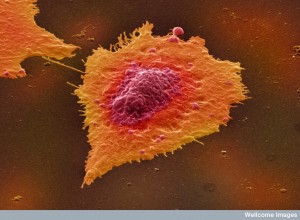 Most cancers come from specific new mutations that occur in individual cells often related to the microenvironments and signals. Twenty percent of all cancers are related to factors from microbes and inflammation produced by microbes. However, microbes can also inhibit cancers.
Most cancers come from specific new mutations that occur in individual cells often related to the microenvironments and signals. Twenty percent of all cancers are related to factors from microbes and inflammation produced by microbes. However, microbes can also inhibit cancers.
Acetate triggers receptors that inhibit inflammation. These most often come from microbes. SCFA signals appear to reduce colon cancer. Having less of microbes that produce butyrate is correlated with more cancer and colitis.
Strangely, another set of research in a mutated mouse, had more cancer with butyrate. But, this research did not have anything to do with microbe production of butyrate, which is the normal situation. This research involved particular niches and altered stem cells. Also a particular diet was used.
So there is complexity in the effects on cancer related to microenvironments, genetics mutations and diet.
SCFAs and Asthma

Airways are exposed to large numbers of microbes. Asthma consists of increased responses and less immune regulation. Damaged epithelial cells can contribute to allergic responses. Commensal microbes have influence in the lungs as well as on the skin and in the intestines.
Fiber metabolized by microbes produces acetate, which increases actions of T cells in the lung and decreases the hyper active airway. This occurs with inhibition of HDAC9. Propionate can also help by increasing dendritic cells that reduce the actions of T helper cells—Th2. Effects of parasitic worms also affects the lungs. These increase SCFAs and decreases asthmatic reactivity.
SCFAs and the Brain
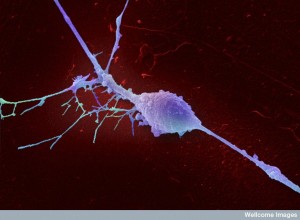 Butyrate affects the gut nervous system. This occurs by cholinergic neurons causing increased motility. Propionate seems to decrease motility and increases secretions.
Butyrate affects the gut nervous system. This occurs by cholinergic neurons causing increased motility. Propionate seems to decrease motility and increases secretions.
SCFAs affect other neurons. They affect transmission of gut to brain increasing energy metabolism. They increase sympathetic actions of increased noradrenaline with increase of heart rate and use of energy.
Acetate can cross the blood brain barrier and signals satiety (fullness). It affects microglia—it restored damaged microglia in research with mice through receptors. Acetate decreases permeability in the blood brain barrier. Specific microbes are also involved including Clostridium tyrobutyricum producing butyrate and Bacteroides thetaiotaomicron producing propionate. In fact, butyrate helps maintain BBB and produces more brain cells and more blood vessels. .
Lactate and Succinate
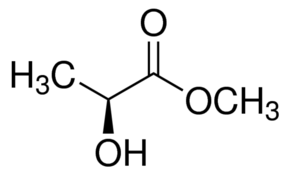
Microbes produce lactate and succinate organic acids in the gut. Until recently they were considered to be part of metabolism, but not important signals in their own right. Recent research shows they are important as signals.
Lactate produced by bacteria is most often metabolized to propionate or butyrate by other bacteria. In the vagina, lactate is produced by microbes and this signals with HDAC and receptors.
Succinate, normally, is part of the citric acid cycle and becomes fumarate. Produced by microbes, succinate can modulate inflammation and produce positive effects.
Butyrate appears to have many positive effects. But it is not known if it just butyrate or part of more complex effects from microbes making other particles. These same microbes also produce many other different substances from bile acids and amino acids.
Short Chain Fatty Acids From Fiber As Critical Signals
 As more is learned, it has become clear that most of life is based on complex conversations between many cells. Communication between gut, skin and lung cells, with immune cells and microbes are vital for many different functions. An increasing number of molecules are being identified as signals making it vastly complex. This includes proteins, peptides, amino acids, RNAs, neurotransmitters, cytokines and more.
As more is learned, it has become clear that most of life is based on complex conversations between many cells. Communication between gut, skin and lung cells, with immune cells and microbes are vital for many different functions. An increasing number of molecules are being identified as signals making it vastly complex. This includes proteins, peptides, amino acids, RNAs, neurotransmitters, cytokines and more.
The health benefits of dietary fiber have been known for some time. But recent research shows that the reasons are very complex. They involve complex signaling through metabolites of this fiber produced by microbes.
Recently, short chain fatty acids (SCFAs) have been identified as vital signals for processes in the gut, skin, lungs, vagina and brain related to health. They have impact on production of cancer, as well as inflammation and metabolic diseases. They are related to appetite and weight gain.
These SCFAs are produced through fermentation from dietary fibers. The effects of the SCFAs are very complex and demonstrate that the reasons for positive effects of dietary fiber are just being discovered.
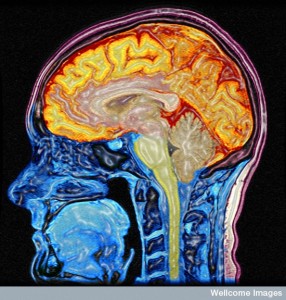 Acetate affects brain: Increases microglia, increases feeling of fullness, increases new brain cells and decreases ability to cross blood brain barrier
Acetate affects brain: Increases microglia, increases feeling of fullness, increases new brain cells and decreases ability to cross blood brain barrier